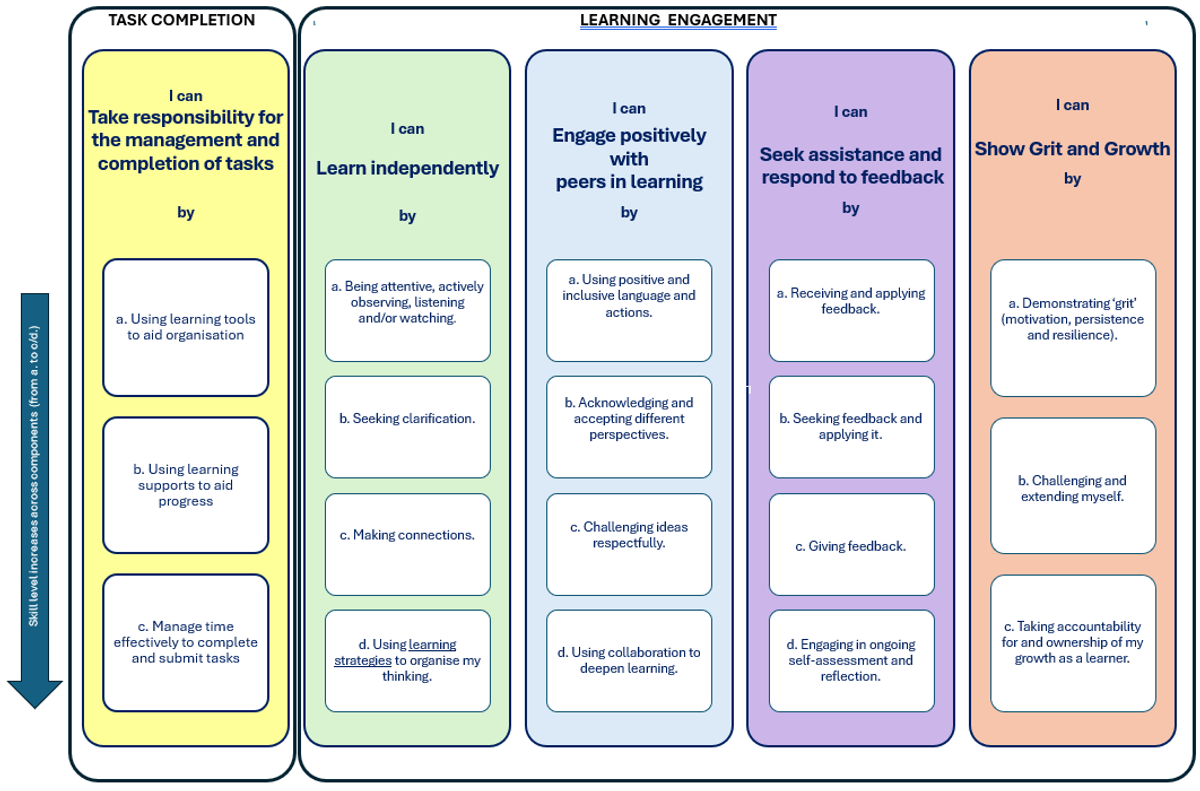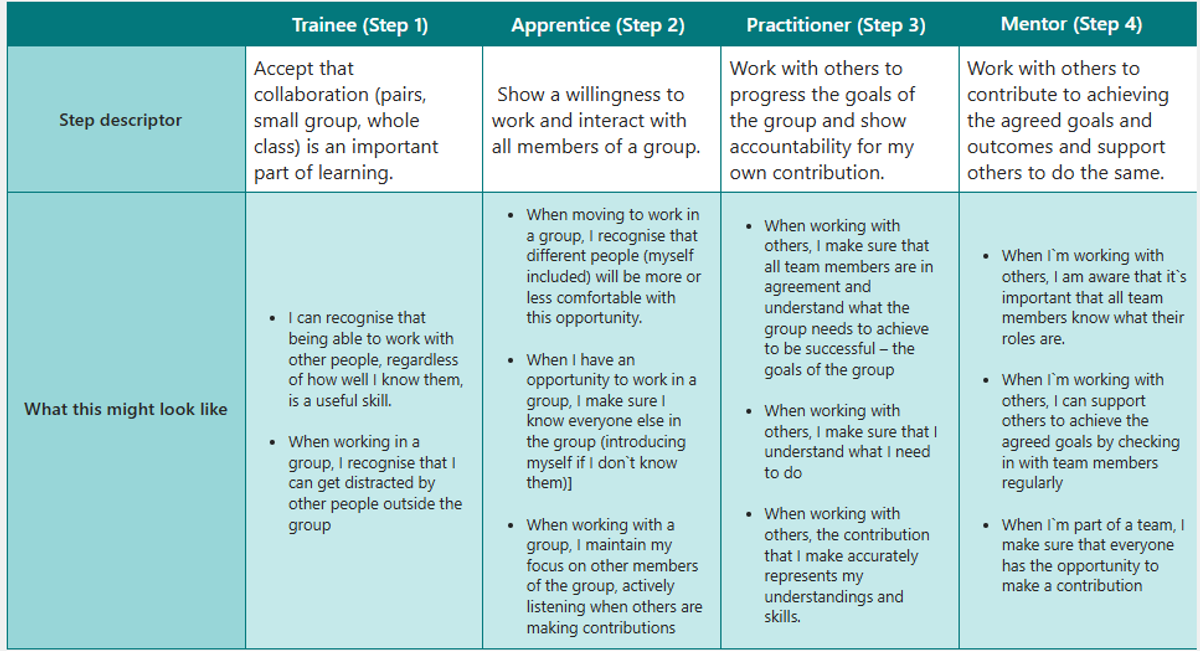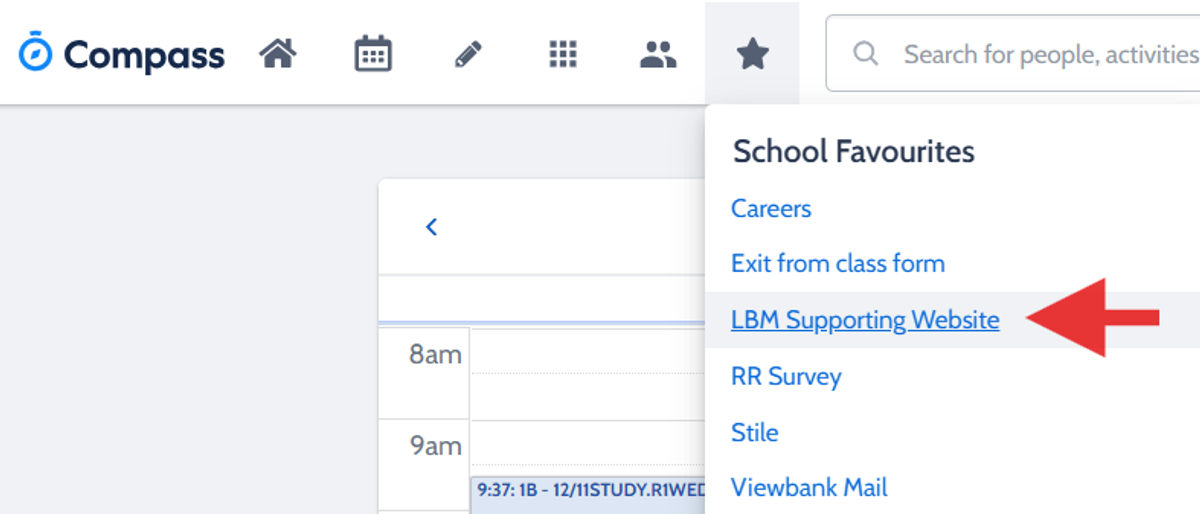Explaining our Learning Behaviours Continuum.

Learning behaviours are transferable, lifelong skills that are utilised by everyone to be successful
The Learning Behaviour Continuum has been updated in 2025. This video provides an overview: https://www.youtube.com/watch?v=UIOodoSEzP8-
Learning Behaviour Continuum Overview
Students and staff have co-created the Learning Behaviour continuum to support everyone to grow their skills to engage positively in their learning at school, outside of school and beyond. Learning behaviours are transferable, lifelong skills that are utilised by everyone to be successful, whatever role that they find themselves doing.
Our learning behaviour focus this time: Seek assistance and respond to feedback
These behaviours support you to become better at obtaining, providing and using feedback. Feedback is always about the task not the person. Beyond school, this means that you`ll be able to apply, and provide, constructive feedback that will lead to better outcomes. These behaviours are assessed on a scale from Trainee (Step 1) to Practitioner (Step 4).
Last week, interim reports were released to the community. This week, the student-led conferences also provided another source of feedback on the learning that has happened this term. Have you reflected on whether you agree or disagree with this feedback - what is the evidence that you`re using to base this on? Reach out to your teacher(s) if you need clarification - or make a plan for how you`ll respond to this feedback.
Specifically, this time, we`re focusing on the ‘micro-behaviour’ a. Receiving and applying feedback.
AT SCHOOL, feedback happens all the time – whenever you`re playing a game, practicing a sporting skill or learning a musical instrument. When you recognise that you don`t get something right, you`re giving yourself feedback. Importantly, doing whatever it is again, is when you get value from this feedback
Feedback is key to growing as a learner. Feedback tells you where you are at the moment with your development of skills or knowledge It`s important to recognise that feedback is about the task and not about the person who created it. Feedback isn`t useful unless it is used in some way.
BEYOND SCHOOL, being able to take on-board feedback and use it constructively is a transferable, lifelong skill. Everyone, no matter how expert they are, can benefit from the perspectives of others.
Here is what this micro-behaviour can look like at each level of the Positive Learning Behaviour Continuum.
Students can access additional supporting resources on the ‘LBM Supporting website*’, accessible via the Compass -School Favourites menu (Star at top right). This resource allows students to pinpoint their current level and provides example strategies to grow this learning.
*This is an internal website – accessible to students and staff only – ask your young person to show you.
If you have any specific, additional examples of what this behaviour can look like, or examples of where it is used, we would really like to hear from you. If you have any additional suggestions, questions or wonderings around this behaviour, or the Learning Behaviour Continuum itself, please email learningbehaviour@viewbank.vic.edu.au and we`ll be in touch.
John Patterson




